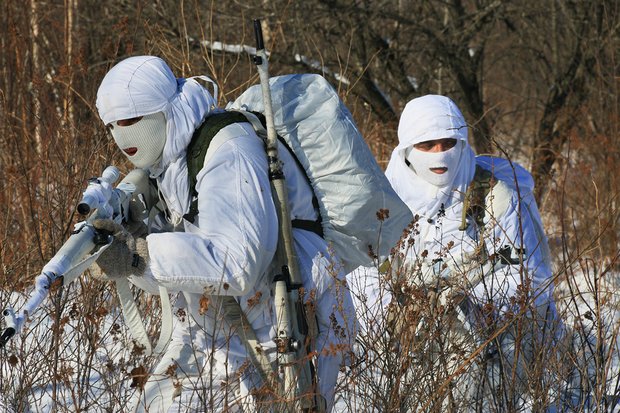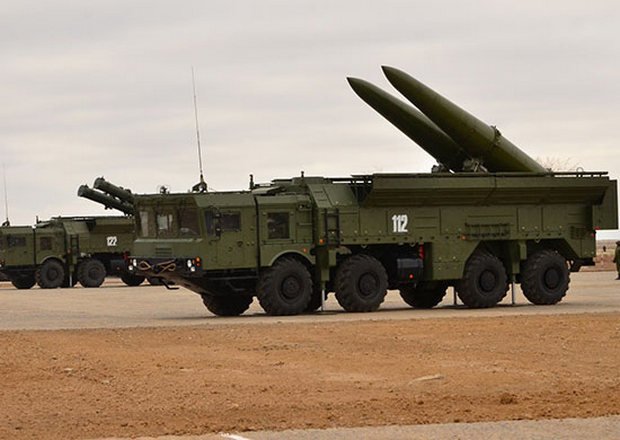Semyon Pegov: ''In the arms race, Russia has relied on 'brains''
Interview with the war correspondent and founder of the project WarGonzo about new military developments and defence theme in the Putin’s message
A significant part of the recent address of Russian President Vladimir Putin to the Federal Assembly was dedicated to the presentation of new defence products, and defence theme became one of the most discussed topics of the week. War correspondent and founder of the project WarGonzo Semyon Pegov explains in an interview with Realnoe Vremya that this time in the 'arms race' Russia has relied not on money and scale but intelligence and high technology. He also told about other new developments in this field: a unique fabric, exoskeletons, which will be used for going to the mountains, and neurointerface for controlling technology using the power of thought.
'Smart' arms race
How do you assess the recent presentation of new weapons in the message of Russian President Vladimir Putin? Can this be a signal for a new arms race?
I think the arms race has never stopped, so it can't be started. The US pays a way much more attention to this: compare our and their defence budgets. Our budget is much more modest, but we have relied on 'brains', as I understand it. On spending smaller amount of funds and producing less volume of arms, creating such weapon that could adequately resist to total stranglehold of our opponents in this area.
It would be impossible without the development of our own science. You know in what kind of mad the scientists were 15-20 years ago and what role these people play today. They have adequate salaries and real prospects. They don't go in packs to Silicon Valley. This suggests that Russia is not a country of the past, but a country of the future.
''In the context of hybrid war, when there is no direct 'head-on' confrontation, it plays the role how regular soldiers are armed. For example, we have the outfit Ratnik.'' Photo: mil.ru
Mass destruction and local conflicts
The message was mainly about weapons of mass destruction. But does it make sense to rely on it now when conflicts are mostly local in nature?
I also think that in the context of hybrid war, when there is no direct 'head-on' confrontation, it plays the role how regular soldiers are armed. For example, we have the outfit Ratnik. Look at our guys who fought in Chechnya. Or in 2008, during the operation in Ossetia — it was difficult to call our army high-tech. But now look at the guys in the SSO (Special Operations Forces of the Russian Federation — editor's note), they surpass any American technology.
Compare, for example, our and American sight, which is five to six times more expensive. Well, perhaps, ours has not been perfected yet, but in a real clash on the ground it is not inferior to the West's by functionality. And our specialists who got used to purchase everything for special operations in the West now can use our developments.
Our developments – were they developed by state-owned companies or private corporations?
It is cool that they are made by our private gunsmiths, like it was in the West, not just a state corporation. If earlier the security services used, for example, Steyr-Mannlicher (a sniper rifle manufactured in Austria — editor's note), now they begin to use Orsis (the brand under which they produce including sniper rifles – editor's note) – it is already our production, LOBAEV Arms (also a brand of sniper rifles — editor's note) – it is also a private company, they set world records in sniper shooting from their rifles. I know that there are promising developments of pistols, which will be able to compete with [Austrian] Glock, and it is not Pistolet Yarygina or PM [Makarov Pistol].
Sniper Vladislav Lobaev was a pioneer in 2005. It was difficult from the bureaucratic point of view. But after him there began to appear private companies that can create small arms that can compete, for example, with the Kalash [the Kalashnikov].

''They are made by our private gunsmiths, like it was in the West, not just a state corporation. If earlier the security services used, for example, Steyr-Mannlicher, then now they begin to use Orsis – it is already our production, LOBAEV Arms – it is also a private company.'' Photo: mil.ru
New military-industrial complex's developments: fabric, exoskeletons and neural interfaces
Are there in the Russian military-industrial complex some unusual developments not connected with the weapon of mass destruction, but about which it is also worth to know?
There was the classified project Tavolga, it is a fabric for special purposes, the development of our scientists from Saratov. The fabric, which by its characteristics surpasses several times famous American Gor-Tex. This fabric can be used in space conditions, at temperatures up to -200°C, there are no analogues in the world of this fabric. It can be both of military and civil purposes.
The same exoskeletons, about which the whole world is dreaming, are already used in medicine for recovery after a stroke. Moreover, with the help of exoskeletons it will be possible to conquer the mountain peaks — I'm revealing you a little intrigue now, I have never written about it before. One of the developers of the Russian military industrial complex with the help of an exoskeleton will try to climb to the mountain top.
Also, I have recently tested a revolutionary technology — neurointerface. So-called cap with electrodes is put on the head, and you can use the thought to control robotics. It is also dual-use: now it is used in medicine, but during the fightings one can easily control a drone and fire.
Once I encountered this neurointerface at a civiс event. I didn't have the opportunity to test it, but then 'neuropilots' complained that it was quite difficult to control a robot using this interface.
I controlled a drone. But I can tell that it all depends on a person and his training. An important role is played by psychological characteristics of a person, especially when it comes to the army. Not everyone can become a sniper, not everyone can become a gunner. And far not everyone will be able to control equipment using the thought, you need to have a certain level of concentration, psychological stability.

''Earlier I thought that we were screwed in the matter of new technologies. Except major projects such as Iskander and others.'' Photo: mil.ru
But the fact is, it is really possible. The work is underway, and in the next couple of years it can be brought (and has already been brought) to the state that the technology can be used not only at exhibitions, but also, for example, by special forces troops in conditions, for example, of urban combat. For example, a SOBR squad will have a couple of professionals who can manage in this way. That's very possible, and it will be a revolution.
Earlier I thought that we were screwed in the matter of new technologies. Except major projects such as Iskander and others. This is all global level and very far away. But there are things in which we are not inferior to the Japanese, who are famous for their high technology, or the Americans. As a person who was born in 1985 and formed in 1990, modern developments still surprise me, I think: ''Come on, is it really we who have made it? No way!'' And I think it's cool, and it's a revolution.